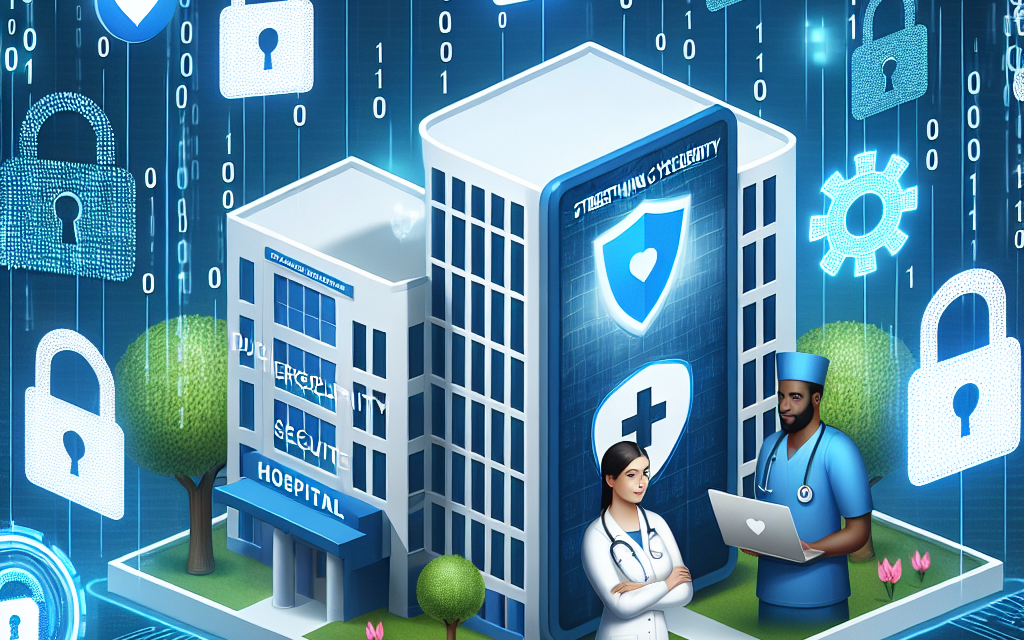Strengthening Cybersecurity in Healthcare: Strategies for Safeguarding Patient Data in the Digital Age
In an era where digital transformation is reshaping industries, healthcare stands at the forefront of this evolution. The integration of technology into healthcare systems has improved patient care, streamlined operations, and enhanced data management. However, this digital shift has also exposed healthcare organizations to unprecedented cybersecurity threats. As patient data becomes increasingly digitized, the need for robust cybersecurity measures has never been more critical. This article explores effective strategies for strengthening cybersecurity in healthcare, ensuring the protection of sensitive patient information in the digital age.
1. Understanding the Cybersecurity Landscape in Healthcare
The healthcare sector has become a prime target for cybercriminals due to the wealth of sensitive information it holds. According to a report by the Ponemon Institute, healthcare organizations experienced an average of 16 data breaches per year, with the cost of each breach averaging $4.35 million. The types of cyber threats faced by healthcare organizations include ransomware attacks, phishing schemes, and insider threats.
Ransomware attacks, in particular, have surged in recent years. Cybercriminals encrypt critical data and demand a ransom for its release, often crippling healthcare operations. For instance, the 2020 attack on Universal Health Services (UHS) resulted in a significant disruption of services across its facilities, highlighting the devastating impact of such breaches.
Phishing attacks, where attackers impersonate legitimate entities to steal credentials, are also prevalent. A study by Proofpoint found that 88% of healthcare organizations experienced phishing attacks in 2020. These attacks exploit the human element, making employee training and awareness crucial in mitigating risks.
Insider threats, whether malicious or accidental, pose another significant risk. Employees with access to sensitive data may inadvertently expose it through negligence or may intentionally misuse it for personal gain. The challenge lies in balancing access to information for legitimate purposes while safeguarding against potential misuse.
2. Implementing Comprehensive Risk Assessments
Conducting thorough risk assessments is a foundational step in strengthening cybersecurity in healthcare. A risk assessment helps organizations identify vulnerabilities, assess potential threats, and prioritize security measures based on the level of risk. The National Institute of Standards and Technology (NIST) provides a framework that healthcare organizations can adopt to conduct effective risk assessments.
Key components of a comprehensive risk assessment include:
- Asset Identification: Cataloging all digital assets, including electronic health records (EHRs), medical devices, and software applications.
- Threat Identification: Identifying potential threats, such as malware, insider threats, and natural disasters.
- Vulnerability Assessment: Evaluating existing security measures and identifying weaknesses that could be exploited by attackers.
- Impact Analysis: Assessing the potential impact of a data breach on patient safety, organizational reputation, and financial stability.
- Risk Mitigation Strategies: Developing strategies to address identified risks, including implementing technical controls, policies, and employee training.
For example, a large hospital system may discover during its risk assessment that its legacy systems are vulnerable to cyberattacks due to outdated software. In response, the organization can prioritize upgrading these systems and implementing more robust security measures.
Regularly updating risk assessments is essential, as the cybersecurity landscape is constantly evolving. Organizations should conduct assessments at least annually or whenever significant changes occur, such as the introduction of new technologies or changes in regulations.
3. Strengthening Access Controls and Authentication Mechanisms
Access controls are critical in safeguarding patient data. Implementing strong access control measures ensures that only authorized personnel can access sensitive information. This involves establishing user roles, permissions, and authentication mechanisms that align with the principle of least privilege.
Key strategies for strengthening access controls include:
- Role-Based Access Control (RBAC): Assigning access rights based on user roles within the organization. For instance, a nurse may have access to patient records, while administrative staff may only access billing information.
- Multi-Factor Authentication (MFA): Requiring users to provide multiple forms of verification before accessing sensitive data. This could include a password and a one-time code sent to a mobile device.
- Regular Access Reviews: Conducting periodic reviews of user access rights to ensure that only current employees have access to sensitive information. This is particularly important when employees leave the organization or change roles.
- Session Timeouts: Implementing automatic session timeouts for inactive users to reduce the risk of unauthorized access if a device is left unattended.
For example, a healthcare organization that implemented MFA saw a 99.9% reduction in account compromise incidents. By requiring additional verification steps, the organization significantly enhanced its security posture.
Moreover, organizations should educate employees about the importance of strong passwords and the risks associated with sharing login credentials. Regular training sessions can reinforce best practices and help create a culture of cybersecurity awareness.
4. Enhancing Data Encryption and Secure Communication
Data encryption is a vital component of cybersecurity in healthcare. Encrypting sensitive patient data ensures that even if it is intercepted or accessed by unauthorized individuals, it remains unreadable without the appropriate decryption keys. This is particularly important for data transmitted over networks and stored on devices.
Key considerations for enhancing data encryption include:
- End-to-End Encryption: Implementing encryption protocols for data in transit and at rest. This ensures that patient data is protected throughout its lifecycle, from the moment it is collected to when it is stored or transmitted.
- Secure Communication Channels: Utilizing secure communication methods, such as Virtual Private Networks (VPNs) and secure messaging platforms, to protect sensitive information shared between healthcare providers and patients.
- Regular Encryption Audits: Conducting audits to ensure that encryption protocols are up to date and compliant with industry standards, such as the Health Insurance Portability and Accountability Act (HIPAA).
- Data Loss Prevention (DLP) Solutions: Implementing DLP solutions that monitor and protect sensitive data from unauthorized access or transmission.
A case study involving a major healthcare provider illustrates the importance of encryption. After experiencing a data breach, the organization implemented end-to-end encryption for all patient communications. As a result, they reported a significant decrease in data breaches and improved patient trust.
In addition to encryption, organizations should also establish clear policies regarding the sharing of patient data. Employees should be trained on secure communication practices and the importance of safeguarding sensitive information.
5. Fostering a Culture of Cybersecurity Awareness
Creating a culture of cybersecurity awareness is essential for the long-term success of any cybersecurity strategy. Employees are often the first line of defense against cyber threats, and their awareness and vigilance can significantly reduce the risk of breaches.
Strategies for fostering a culture of cybersecurity awareness include:
- Regular Training Programs: Implementing ongoing training programs that educate employees about cybersecurity threats, best practices, and the importance of safeguarding patient data.
- Simulated Phishing Exercises: Conducting simulated phishing attacks to test employees’ awareness and response to potential threats. This helps reinforce training and identify areas for improvement.
- Clear Communication Channels: Establishing clear channels for reporting suspicious activities or potential breaches. Employees should feel empowered to report concerns without fear of repercussions.
- Leadership Involvement: Engaging leadership in cybersecurity initiatives to demonstrate the organization’s commitment to protecting patient data. Leaders should model best practices and encourage a culture of accountability.
A healthcare organization that implemented a comprehensive cybersecurity awareness program reported a 50% reduction in successful phishing attacks within six months. By empowering employees with knowledge and resources, the organization strengthened its overall security posture.
Moreover, organizations should recognize and reward employees who demonstrate exemplary cybersecurity practices. This can help reinforce positive behaviors and encourage a proactive approach to cybersecurity.
Conclusion
As healthcare organizations continue to embrace digital transformation, the importance of strengthening cybersecurity cannot be overstated. By understanding the cybersecurity landscape, conducting comprehensive risk assessments, implementing robust access controls, enhancing data encryption, and fostering a culture of cybersecurity awareness, healthcare organizations can effectively safeguard patient data in the digital age.
The stakes are high, as data breaches not only compromise patient privacy but also threaten the integrity of healthcare systems. By adopting a proactive approach to cybersecurity, healthcare organizations can protect sensitive information, maintain patient trust, and ensure compliance with regulatory requirements.
In summary, the strategies outlined in this article provide a roadmap for healthcare organizations seeking to enhance their cybersecurity posture. As cyber threats continue to evolve, organizations must remain vigilant and adaptable, continuously assessing and improving their security measures to safeguard patient data in an increasingly digital world.





